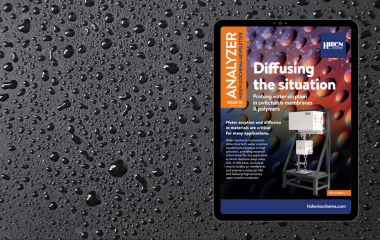Exploring the Hydrogen Storage Capacity of Metal Hydrides
Metal hydrides have emerged as a promising solution in the quest for efficient hydrogen storage, a critical component in transitioning to a hydrogen-based clean energy future. With the increasing demand for fuel cells and the need for storing hydrogen on a large scale, understanding the potential of metal hydrides is more important than ever.
Introducing Metal Hydrides
Metal hydrides are compounds formed when metals react with hydrogen. Most metals will absorb hydrogen under specific conditions of temperature and pressure. Their significance in the context of hydrogen storage lies in their ability to hold substantial amounts of hydrogen atoms, making them potential candidates for hydrogen storage systems.
Storage Mechanisms: Physisorption vs. Chemisorption
Hydrogen storage can occur through two primary mechanisms: physisorption and chemisorption. In physisorption, hydrogen molecules are held on the surface, or within pores, of materials through weak van der Waals forces. This method of storing hydrogen is typically reversible and occurs at low temperatures. On the other hand, chemisorption involves the chemical dissociation of hydrogen molecules and incorporation within the metal or alloy, forming a hydride. This storage method is generally more stable and can store hydrogen at higher densities.
Factors Influencing Storage Capacity
Several factors influence the hydrogen storage capacity of metal hydrides:
- Type of Metal: Different metals have varying affinities for hydrogen. For instance, metals like palladium (Pd) have been extensively studied for their hydride-forming capabilities.
- Crystal Structure: The arrangement of atoms in the hydride can impact its storage capacity.
- Temperature and Pressure Conditions: The conditions under which the hydride is formed and used can significantly affect its hydrogen storage properties.
Examples of Metal Hydrides
- Magnesium Hydride (MgH2): With a storage capacity of up to 7.6 wt% hydrogen, MgH2 stands out. However, its slow kinetics of hydrogen uptake and release limit its practical applications without modification.
- Sodium Alanate (NaAlH4): Storing up to 5.5 wt% hydrogen, sodium alanate offers faster hydrogen uptake and release rates than MgH2, making it more suitable for certain applications.
Ongoing Research and Innovations
Researchers are continuously striving to enhance the properties of metal hydrides for hydrogen storage. Some innovative approaches include:
- Utilizing nanoscale materials to improve storage capacities.
- Doping techniques to modify the properties of the hydrides.
- Developing new hydride compositions to achieve better storage capacities and kinetics.
Potential and Challenges
Metal hydrides hold immense promise as hydrogen storage materials. Their ability to store hydrogen at high densities and the ongoing research to optimize their properties make them a viable option for future storage systems. However, challenges like improving the kinetics of hydrogen uptake and release, ensuring long-term stability, and scaling up for commercial applications need to be addressed.
As the world moves towards a clean energy future, metal hydrides, with their potential for efficient hydrogen storage, are poised to play a pivotal role. However, continuous research and innovation are essential to harness their full potential. At Hiden Isochema, we are at the forefront of this research, providing tools like the IGA-001 and XEMIS-001 gravimetric gas sorption analyzers and the IMI-HTP manometric (Sievert’s method) hydrogen storage analyzer for studying the hydrogen sorption behaviour of various metals.


